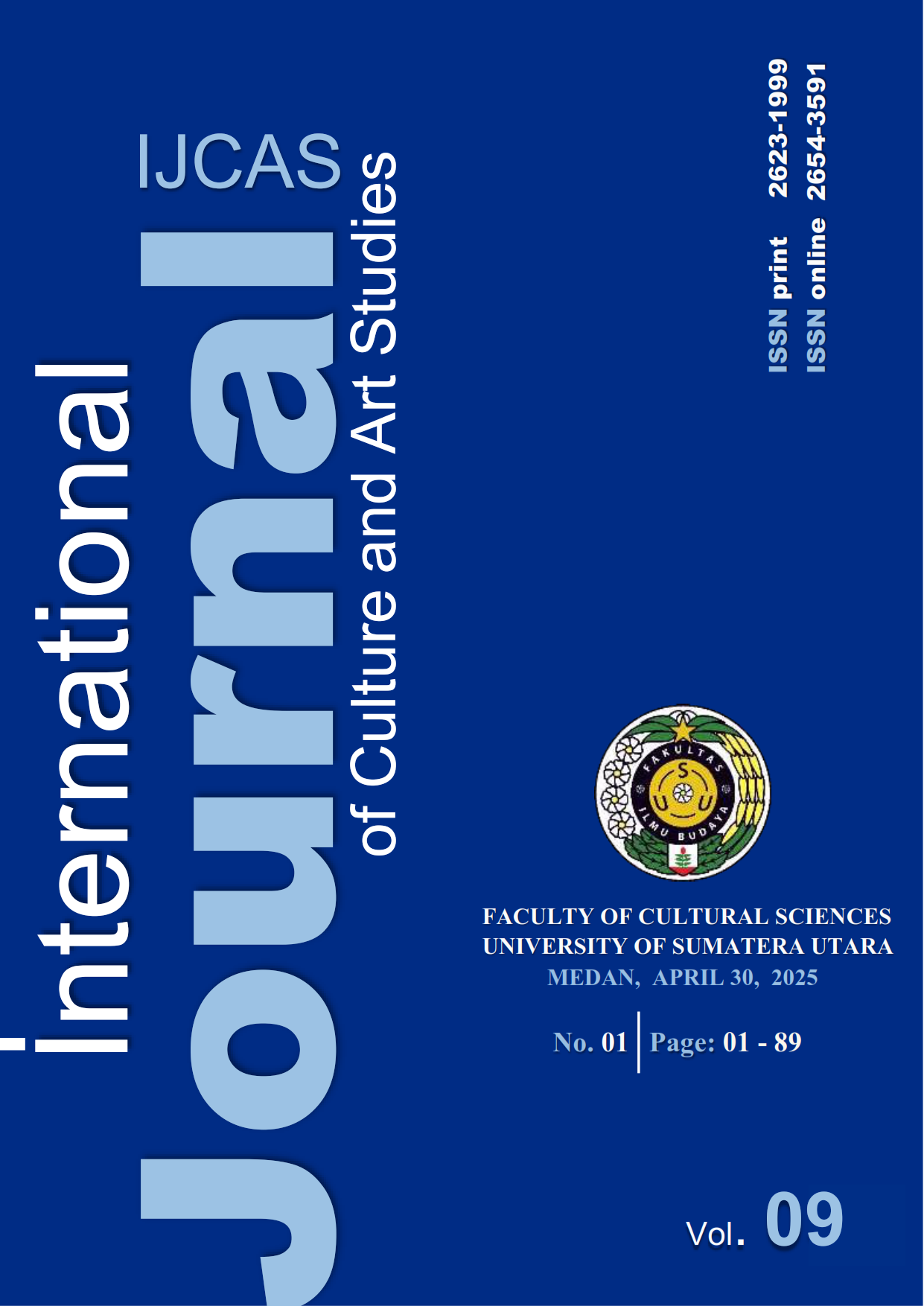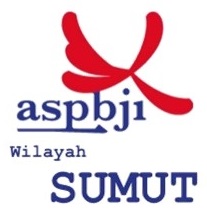Integration of Kejawen Moralistic Values in Javanese Traditional Houses Towards Communal Living in Malaysia
DOI:
https://doi.org/10.32734/ijcas.v9i1.18675Keywords:
Kejawen Values, Javanese Culture and Belief, Malaysia Traditional Javanese HouseAbstract
The migration of Javanese people from Indonesia to Malaysia from the early 14th century to the 19th century due to trading and maritime activities resulted in the integration of Kejawen values -Javanese philosophical tradition in the local Malaysian context involving language, customs, and the built environment. Even though the Kejawen influences are not directly widespread despite its Hinduism and Buddhist traditions, and given Malaysia's distinct Malay-Muslim identity, the Kejawen values still influence the Javanese community's cultural practices, particularly in local Malaysian traditional ceremonies, art, and customs. Henceforth, this study's objectives, firstly, aim to identify these Kejawen characteristics, precisely the attributes of Javanese architecture, and analyse to what extent the level of Kejawen value influences the Javanese traditional house in Johore, Malaysia, after the assimilation process with the local context. The sample of Javanese houses in the Johore state was selected because their most populated community still upholds the Kejawen values and traditions. The methodology used in this study is the qualitative descriptive method under the interpretivism paradigm, which aligns the semiotics and hermeneutics methods to understand the symbolic meaning of the architectural elements. The study findings conclude that there was an assimilation process between the authenticity of Kejawen Javanese belief values and its symbolic influence on the local Malay architecture in Malaysia, which is found in the form comprising setting and location, scale and size, façade, structure, and ornament, whilst space-making involves access, circulation, hierarchy and function of the traditional houses. In this way, the traditional Javanese house becomes a living embodiment of Kejawen values, whether in its original built form or having undergone assimilation. This contributes to transnational dimensions of Kejawen values in fulfilling Malaysia's communal life in various dimensions—social, environmental, and spiritual- to achieve better living in contemporary society.
Downloads
References
Al-Bar, M. A., Chamsi-Pasha, H., Al-Bar, M. A., & Chamsi-Pasha, H. (2015). The origins of Islamic morality and ethics. Contemporary Bioethics: Islamic Perspective, 49-74.
Afkham, M. R. (2014). Sign and Symbol in Architecture. Advances in Environmental Biology, 8(12), 445-452.
Awang, H., & Ismail, H. (2016). Minda Pengarang Melayu: Melestarikan Hubungan antar-Budaya Melayu-Jawa dalam Sulalat al-Salatin. MANU Jurnal Pusat Penataran Ilmu dan Bahasa, 23.
Bahrin, T. S. (1967). The pattern of Indonesian migration and settlement in Malaya. Asian Studies, 5(2), 233-258.
Burhani, A. N. (2017). Geertz’s Trichotomy of abangan, santri, and priyayi. Controversy and Continuity. Journal of Indonesian Islam, 11(2), 329-350.
Collier, J. (2007). Moral imagination and the practice of architecture. In Architecture and its ethical dilemmas (pp. 107-118). Taylor & Francis.
Fajfrlíková, P. (2018). Kejawen as the Traditional Mystical Belief on the Contemporary Java Island.
Geertz, C. (1976). The religion of Java: University of Chicago Press.
Geertz, C. (2017). Ritual and social change: a Javanese example. In Ritual (pp. 549-576): Routledge.
Ismail, A. S., & Zhaharin, E. N. (2017). Built form properties as sign and symbols of patron political ideology. Jurnal Kejuruteraan, 29(2), 87-96.
Idham, N. C. (2018). Javanese vernacular architecture and environmental synchronization based on the regional diversity of Joglo and Limasan. Frontiers of Architectural Research, 7(3), 317-333.
Jandra, M., Djamil, A. S., Salamon, H., Ansyory, A., & Zein, M. D. (2016). Identity and Culture Change of Javanese in Johor. UMRAN-Journal of Islamic and Civilizational Studies, 3(3-1).
Kartono, J. L. (2005). Konsep ruang tradisional jawa dalam konteks budaya. Dimensi Interior, 3(2).
Kim, D. Y., Oh, H. K., & Ju, S. R. (2013). A Study on the Belief and the Architecture of Traditional Javanese House. Korean Institute of Interior Design Journal, 22(6), 199-211.
Kristina, A. (2021). The Position of Kejawen in the Indonesian Constitution. Dinika: Academic Journal of Islamic Studies, 6(2), 291-308.
Liora, K. B. A., Saputra, C. D., Risqullah, L. F., & Fachri, M. T. (2022). Fenomena Praktik Islam Kejawen Dalam Perspektif Agama Islam. Moderasi: Jurnal Kajian Islam Kontemporer, 1(01).
Lockard, C. A. (1971). The Javanese as emigrant: Observations on the development of Javanese settlements overseas. Indonesia(11), 41-62.
Maududi, A. (1966). Ethical viewpoint of Islam. Lahore: Islamic Publications.
McCabe, B. J. (2007). The influences of Sufism and Kejawen in Indonesian political discourse.
Meilink-Roelofsz, M. (1962). Portuguese Malacca and Native Trade in the Malay-Indonesian Area. In Asian Trade and European Influence: In the Indonesian Archipelago between 1500 and about 1630 (pp. 136-172): Springer.
Mohd, K. (1880). Tamrin. 1984. Orang Jawa di Selangor: Penghijrahan dan Penempatan 1880-1940.
Mohd, K. (1980). Tamrin. 1980" The Javanese Involvement in the Economic Development of British Malaya.". Paper presented at the 8th Conference of the International Association of Historians of Asia.
Muslim, L. G. Z., Hamdani, N. M., Puspitasari, D. P., & Sasikirani, A. (2022). Kepercayaan Kejawen Islam dalam Perspektif Agama Islam. Moderasi: Jurnal Kajian Islam Kontemporer, 1(01).
Musman, A. (2017a). Agama ageming aji: Menelisik akar spiritualisme Jawa: Anak Hebat Indonesia.
Musman, A. (2017b). Filosofi Rumah Jawa: Anak Hebat Indonesia.
Musman, A. (2024). Lurik–Pesona, Ragam dan Filosofi: Penerbit Andi.
Olthof, W. (2014). Babad Tanah Jawi: Media Pressindo.
Prakoso, B. P., & Wilianto, H. (2020). Penerapan konsep kejawen pada rumah tradisional Jawa. ARTEKS: Jurnal Teknik Arsitektur, 5(2), 165-172.
Picon, A. (2020). Architecture, materiality, and politics: sensations, symbols, situations, and decors. Political theory and architecture.
Pugin, A. W. N., Aldrich, M., Aldrich, M. B., Atterbury, P., Bergdoll, B., & Floyd, M. H. (1995). AWN Pugin: master of gothic revival: Yale University Press.
Ridlo, M. (2021). Tafsir Komprehensif Karya Clifford Geertz: Abangan, Santri, Dan Priyayi Dalam Masyarakat Jawa. HUMANISTIKA: Jurnal Keislaman, 7(2), 220-241.
Robson, S. O. (1981). Java at the crossroads: aspects of Javanese cultural history in the 14th and 15th centuries. Bijdragen tot de taal-, land-en volkenkunde(2/3de Afl), 259-292.
Rofiqoh, Y. I. a., Alvino, A. T., Chusae, A., & Nizar, Y. A. (2021). Islam and Syncretism in Java: Reflections on the Thought of Geertz and Woodward. MUHARRIK: Jurnal Dakwah Dan Sosial, 4(01), 47-61.
Subiyantoro, S. (2011). The interpretation of Joglo building house art in the Javanese cultural tradition. Mudra Journal of Art and Culture, 26(3).
Satwiko, P. (2004). Traditional Javanese Architecture and Themal Comfort. Universitas Atma Jaya Yogyakarta.
Santoso, T., Rais, W. A., & Yulianti, A. I. (2024). Javanese Society's Concept of Time (Kejawen): Anthropological Linguistic Study. Paper presented at the The Virtual International Conference on Economics, Law and Humanities.
Sekimoto, T. (1994). Pioneer settlers and state control: A Javanese migrant community in Selangor, Malaysia. Japanese Journal of Southeast Asian Studies, 32(2), 173-196.
Soenjoto, W. P. P. (2022). Islam kejawen as an adoption of local wisdom and Islamic development in Javanese communities. SHAHIH: Journal of Islamicate Multidisciplinary, 7(1), 67-76.
Sunarti, L., & Fadeli, T. R. (2018). ’Tracing Javanese Identity and Culture in Malaysia: Asimilation and Adaptation of Javanese in Malaysia,’. Paramita: Historical Studies Journal, 28(1), 2018.
Tamrin, K. M. Javanese Labour and the Development of Malaya. Kertas Kadangkala Bil, 6.
Tarigan, R., Antariksa, A., & Salura, P. (2022). Reconstructing the Understanding of the Symbolic Meaning Behind the Architecture of Javanese Traditional House. Civil Engineering and Architecture, 10(1), 305-322.
Tirtosudarmo, R. (2005). The Orang Melayu and Orang Jawa in the'lands Below the Winds': Centre for Research on Inequality, Human Security and Ethnicity.
Van den Boogert, J. (2017). The role of slametan in the discourse on Javanese Islam. Indonesia and the Malay World, 45(133), 352-372.
Winstedt, E. (1948). The Malay founder of medieval Malacca. Bulletin of the School of Oriental and African Studies, 12(3-4), 726-729.
Woodward, M. R. (1988). The" Slametan": Textual Knowledge and Ritual Performance in Central Javanese Islam. History of Religions, 28(1), 54-89.
Wright, F. L. (2010). The essential Frank Lloyd Wright: critical writings on architecture: Princeton University Press.
Yin, R. K. (2012). Applications of case study research (Vol. 34). sage.
Yogiswari, K. S. (2020). Kejawen: Kearifan yang adiktif. Genta Hredaya: Media Informasi Ilmiah Jurusan Brahma Widya STAHN Mpu Kuturan Singaraja, 4(2), 185-197.
Downloads
Published
How to Cite
Issue
Section
License
Copyright (c) 2025 alice sabrina ismail

This work is licensed under a Creative Commons Attribution-ShareAlike 4.0 International License.













